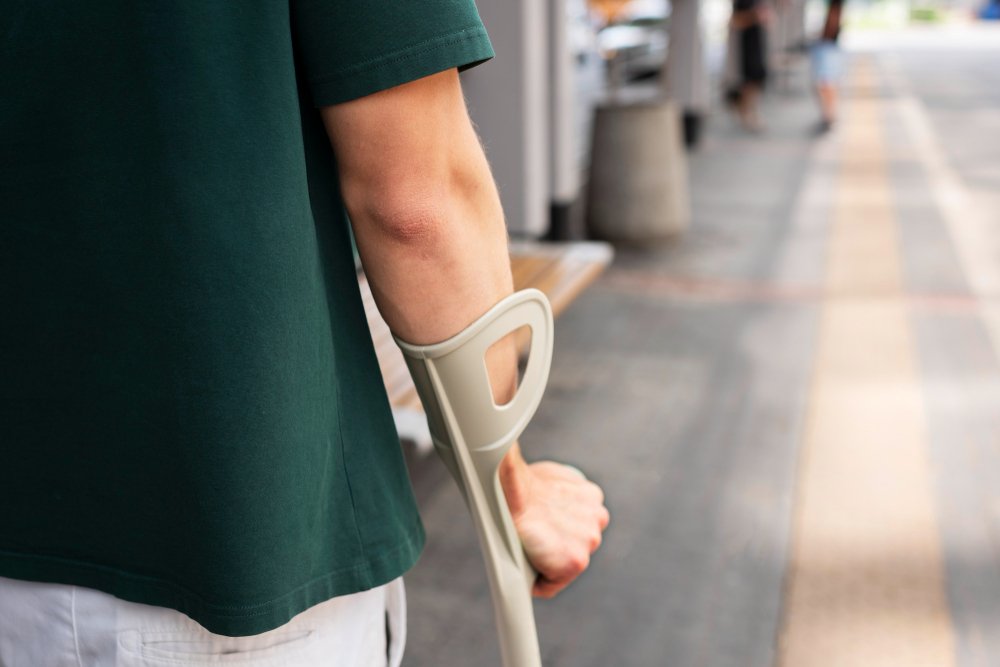Overview
A compression fracture is a type of spinal injury where one or more vertebrae collapse or become compressed due to trauma, osteoporosis, or other underlying conditions. These fractures most commonly occur in the thoracic (mid-back) or lumbar (lower back) regions of the spine. Compression fractures may range from mild to severe, causing pain, reduced mobility, nerve damage, and spinal deformities such as kyphosis (hunchback posture).
In Korea, the treatment of compression fractures has advanced significantly, with world-class hospitals and spine centers offering a wide range of options, including non-surgical therapies, advanced imaging diagnostics, minimally invasive procedures such as vertebroplasty and kyphoplasty, as well as traditional Korean medicine (Hanbang) for pain relief and rehabilitation. With the rise of medical tourism, Korea has become a destination for patients worldwide seeking high-quality, cost-effective spine care.
What is Compression Fracture?
A compression fracture occurs when the vertebra, the small bones that make up the spine, is weakened and unable to withstand normal pressure, leading to collapse. This can happen due to trauma (such as a fall or accident), but it is most often caused by osteoporosis, a condition that makes bones brittle and fragile. In younger individuals, compression fractures are often linked to sports injuries or high-impact accidents, while in older adults, even minor stress such as coughing, lifting, or bending may cause a fracture.
Compression fractures can significantly affect spinal stability and overall quality of life. In severe cases, they can result in nerve compression, chronic pain, and disability if not treated properly.
Symptoms
The symptoms of compression fractures vary depending on the severity of the injury and the nerves involved. Common signs include:
- Sudden, sharp back pain that worsens with movement
- Pain localized in the mid or lower back
- Height loss over time due to multiple vertebral collapses
- Stooped or hunched posture (kyphosis)
- Limited spinal flexibility and mobility
- Tingling, numbness, or weakness in the legs (if nerves are affected)
- Difficulty standing, walking, or performing daily activities
- Chronic pain that becomes worse when standing and improves when lying down
Causes
Compression fractures are primarily caused by conditions or situations that weaken the bones:
- Osteoporosis – the leading cause, particularly in elderly individuals, where bones lose density and strength
- Trauma or injury – such as car accidents, sports injuries, or falls
- Cancer metastasis – cancers that spread to the spine can weaken vertebrae and lead to fractures
- Spinal infections – which weaken the vertebrae over time
- Excessive weight or repetitive strain – adding pressure to the spinal column
- Long-term corticosteroid use – which may reduce bone density
Risk Factors
Several factors increase the likelihood of developing a compression fracture:
- Advanced age, especially postmenopausal women with osteoporosis
- Family history of osteoporosis or spine conditions
- Poor nutrition, particularly low calcium and vitamin D intake
- Smoking and excessive alcohol consumption, both of which weaken bones
- Sedentary lifestyle with little weight-bearing exercise
- Preexisting conditions like rheumatoid arthritis or endocrine disorders
- History of previous spinal fractures or bone injuries
Complications
If left untreated, compression fractures can result in serious complications:
- Chronic pain and reduced quality of life
- Spinal deformities such as severe kyphosis (hunchback posture)
- Nerve compression leading to tingling, numbness, or paralysis
- Increased risk of additional fractures in nearby vertebrae
- Reduced lung capacity and breathing difficulties due to spinal deformity
- Limited physical activity, leading to muscle weakness and further bone loss
- Emotional challenges such as depression due to chronic pain and immobility
Prevention
Preventive measures can significantly reduce the risk of compression fractures:
- Bone health management – ensuring sufficient intake of calcium and vitamin D
- Regular exercise – especially weight-bearing and strength-training exercises to strengthen bones and muscles
- Fall prevention strategies – using assistive devices, proper footwear, and safe home environments for elderly individuals
- Avoiding smoking and excessive alcohol – to preserve bone density
- Routine bone density screening – especially for postmenopausal women and elderly men
- Medication management – carefully monitoring long-term corticosteroid use
- Early treatment of osteoporosis – with medications such as bisphosphonates or hormone therapy
Treatment Options in Korea
1. Diagnosis
Korean hospitals utilize advanced diagnostic tools to assess compression fractures:
- X-rays – to detect vertebral collapse or deformity
- MRI scans – to evaluate nerve involvement, soft tissue damage, or cancer metastasis
- CT scans – to provide detailed images of bone structure
- Bone density tests (DEXA scan) – to assess osteoporosis risk
- Blood tests – to check for underlying conditions contributing to bone weakness
2. Non-Surgical Treatments
Many compression fractures, especially mild ones, can be treated conservatively in Korea:
- Pain management with medications such as analgesics or anti-inflammatory drugs
- Back braces to support the spine and prevent further injury
- Physical therapy and rehabilitation programs focused on improving strength, posture, and mobility
- Osteoporosis treatment including medications that improve bone density
- Traditional Korean medicine (Hanbang) – acupuncture, cupping therapy, and herbal medicine are often used alongside modern treatment to reduce pain and promote healing
3. Minimally Invasive Surgical Treatments
Korea is known for its advanced minimally invasive procedures for spinal care:
- Vertebroplasty – a procedure where medical cement is injected into the fractured vertebra to stabilize it
- Kyphoplasty – similar to vertebroplasty, but includes the use of a balloon to restore vertebral height before cement injection
- Endoscopic spine surgery – used in cases where nerve compression needs to be relieved
4. Advanced Surgical Options
In severe cases, surgery may be necessary:
- Spinal fusion surgery to stabilize multiple fractured vertebrae
- Decompression surgery if nerves are compressed and causing neurological symptoms
- Reconstructive procedures to correct spinal deformities
5. Rehabilitation and Support
Korean spine centers emphasize a holistic approach to rehabilitation:
- Customized physical therapy programs focusing on strength, flexibility, and balance
- Pain management clinics using a combination of Western and Korean medicine
- Nutrition counseling to support bone health
- Rehabilitation gyms equipped with specialized machines for spine patients
6. Medical Tourism in Korea
Korea is a leading destination for international patients seeking spine treatments:
- World-class hospitals in Seoul, Busan, and Daegu specialize in spinal disorders
- English-speaking medical staff for foreign patients
- Cost-effective care compared to Western countries, with high success rates
- Comprehensive rehabilitation packages for international patients, including accommodation and follow-up care













